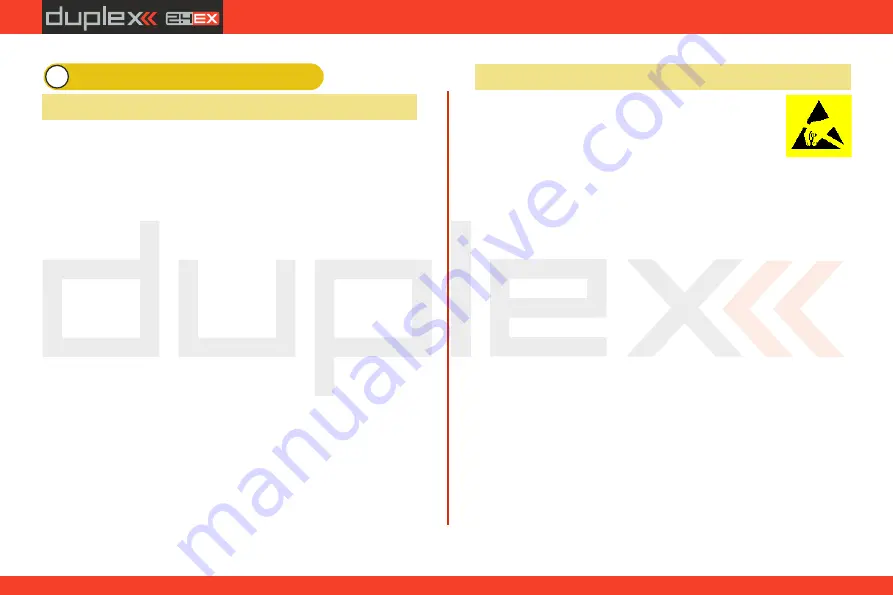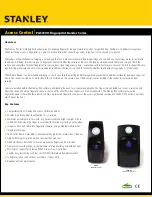
computer radio control system
EN
11 Battery Safety Handling Rules
11.1
Transmitter Battery Pack
1.
The Installed battery pack must be charged from an AC voltage
source using only the included wall battery charger. The included
adapters work with local utility services, each country might be
supplied with a different type of charger.
EU: SYS1428-2412-W2E
UK: SYS1428-2412-W3U
US: SYS1428-2412-W2
Do not use any battery other than the manufacturer approved
Power Ion 3200 DC battery pack.
2.
Always verify the correct polarity while connecting a
transmitter battery pack. The red lead is positive “+” and the black
lead is negative “-“ polarity.
3.
Never test a battery pack by shorting the wire leads. Do not
allow the battery to overheat at any time.
4.
Never leave your transmitter unattended at any time while it is
being charged.
5.
Never charge an overheated battery pack, or in an
environment warmer than 158 F (70C).
6.
During cold months always check the battery‘s capacity, do not
rely on your radio’s low battery warning system.
7.
Always check your transmitter and receiver batteries prior each
flight. Do not rely on your radio’s low battery warning system.
8.
Do not allow radio battery pack to come in contact with open
flame, other heat source or moisture at any time.
2.
For any of the upgrades which require removing the radio back
cover you MUST disconnect the transmitter battery pack before
attempting any work.
3.
It is imperative to store your radio in a controlled environment.
Any extreme temperatures can cause damage to the sensitive
electronics. A sudden change in temperature or humidity can create
condensation which can permanently damage your radio.
4.
Do not use radio during poor weather conditions. Any water or
condensation can cause corrosion and could permanently disable
your radio. If you suspect that moisture has entered your transmitter,
turn it OFF, remove the back cover and let dry it out.
5.
Avoid use in dusty environments.
6.
The manufacturer is not responsible for any unauthorized
modifications. Changes or modifications not expressly approved by
the party responsible for compliance will void the user’s authority to
operate the equipment.
7.
This is a sophisticated hobby product and not a toy. It must be
operated with caution and common sense, always avoid any
mechanical damage.
8.
Always avoid operating close to devices that might cause
harmful electromagnetic interferences.
9.
Keep all moving parts clean and free of dust or fine debris that
might damage the mechanical parts of the radio.
1.
Any repair, installation, or upgrade must be
performed with caution and common sense. These will
require some basic mechanical skills.
11.2 General Safety Rules
66
Summary of Contents for DC-14 II
Page 2: ...computer radio control system EN 2...
Page 40: ...computer radio control system EN 40...
Page 68: ...computer radio control system EN 68...
Page 69: ...computer radio control system EN 69...
Page 70: ...computer radio control system EN 70...







































